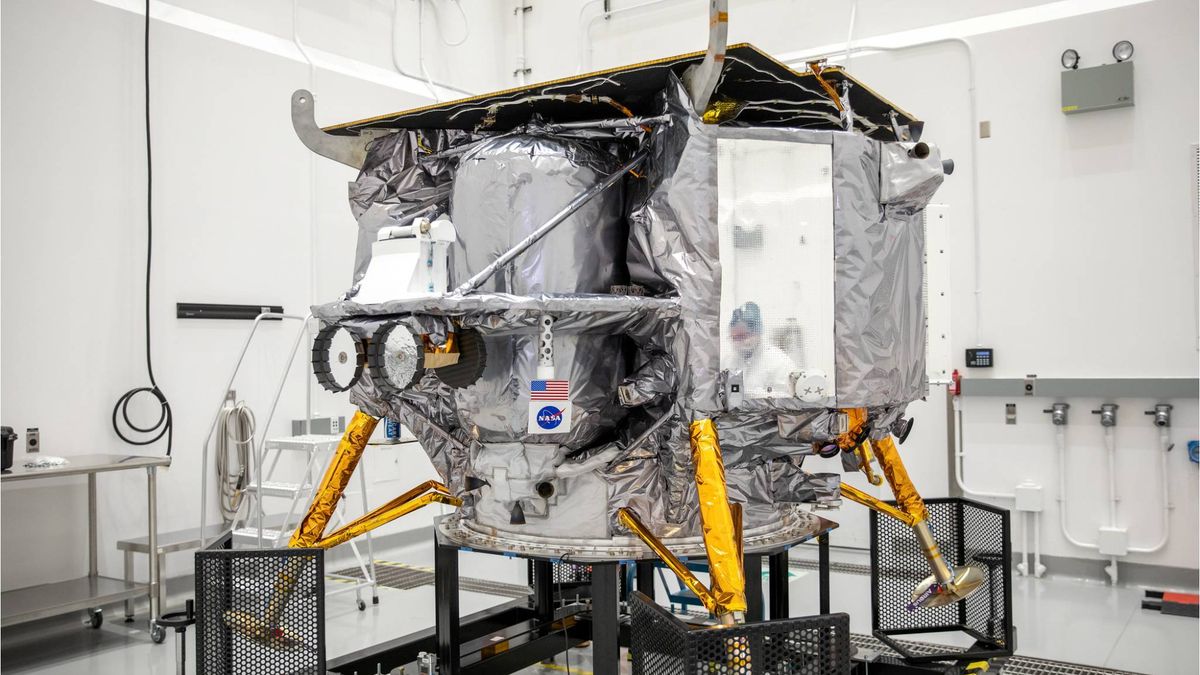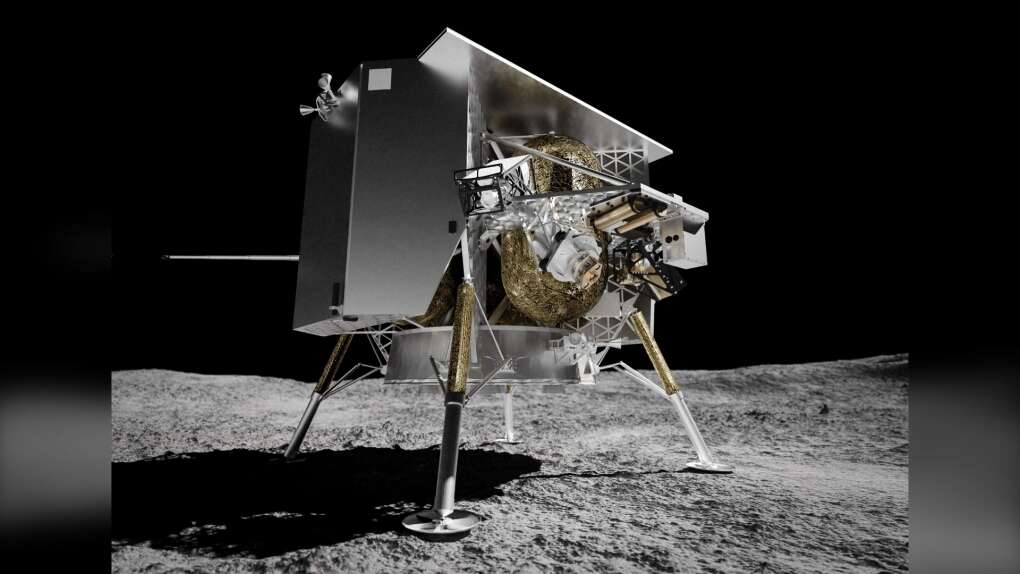Critical Fuel Loss Puts US Moon Landing Mission At Risk
Critical fuel loss puts US moon landing mission at risk as Astrobotic Technology, the company behind the first lunar lander to launch from the United States in 50 years, abandons its attempt to land the Peregrine spacecraft on the moon.
Author:Paula M. GrahamReviewer:Hajra ShannonJan 09, 20241.7K Shares67.2K Views

Critical fuel loss puts US moon landing mission at riskas Astrobotic Technology, the company behind the first lunar lander to launch from the United States in 50 years, abandons its attempt to land the Peregrine spacecraft on the moon. The decision comes less than 24 hours after the vehicle's launch due to a critical propellant loss caused by a fuel leak.
Shortly after the spacecraft's launch from Florida towards the moon on Monday morning, Astrobotic revealed that the mission was at risk. The Peregrine lunar lander faced challenges in orienting itself toward the sun, likely due to a propulsion issue. This misalignment prevented the spacecraft from charging its batteries, posing a significant hurdle to the mission's success.
Although the battery problem was successfully resolved, Astrobotic faced challenges in addressing the apparent issue with the Peregrine lander's propulsion system. In a statement released late Monday evening, the company disclosed that a fuel leak was affecting the thrusters of the Peregrine lander's attitude control system.
These thrusters, designed to precisely align the 6-foot-tall box-shaped lander in space, had to "operate well beyond their expected service life cycles to keep the lander from an uncontrollable tumble." Astrobotic further noted that the thrusters might only have a maximum of 40 more hours of operational capability.
"At this time, the goal is to get Peregrine as close to lunar distance as we can before it loses the ability to maintain its sun-pointing position and subsequently loses power," according to the company.
The prospect of a moon landing, initially scheduled for February 23, has been ruled out due to the ongoing challenges with the Peregrine spacecraft.
Astrobotic had issued a warning just after 1 p.m. ET, indicating a "failure within the propulsion system" that was depleting the vehicle's fuel. Despite continuous efforts throughout Monday to stabilize the issue and explore potential solutions, the company faced insurmountable obstacles.
On Monday afternoon, Astrobotic also shared the first image of the Peregrine lander in space. The photograph revealed that the outer layers of insulation on the vehicle appeared crinkled, underscoring the complexities faced during the mission.
The distorted material observed on the Peregrine lander, as depicted in the first image, served as "the first visual clue that aligns with our telemetry data pointing to a propulsion system anomaly," as stated by the company in a post on the social media platform X at 4:12 p.m. ET on Monday.
From Launch To A Lunar Trajectory
The lunar lander, named Peregrine after the fastest bird in the world, experienced a seemingly successful initial stage of its journey following its launch at 2:18 a.m. ET atop a Vulcan Centaur rocket. Lockheed Martin and Boeing worked together to develop this rocket as part of their joint venture, the United Launch Alliance (ULA).
Notably, this marked the inaugural flight of the Vulcan Centaur rocket, a newly designed vehicle by ULA intended to replace its older fleet of rockets.
According to ULA, the company confirmed shortly after 3 a.m. ET that the Vulcan Centaur had delivered the Peregrine lunar lander into a trans-lunar injection orbit successfully, meeting expectations. This involved a precisely timed engine burn to position the Peregrine lander on a trajectory within Earth's orbit, aligning it for synchronization with the moon approximately 384,400 kilometers (238,855 miles) away.
Following this, the Peregrine lander was anticipated to engage its onboard thrusters, utilizing up to three maneuvers to fine-tune its course. Astrobotic released a statement noting that Peregrine had successfully initiated communication with NASA's Deep Space Network. Additionally, the lander activated its avionics systems, and the thermal, propulsion, and power controllers all powered on and performed as expected.
"After successful propulsion systems activation, Peregrine entered a safe operational state," the company said.
After those successful initial operations, the Peregrine lander encountered an "anomaly" that resulted in the vehicle being oriented away from the sun, rendering it incapable of charging its battery. In response, mission controllers devised and executed an improvised maneuver to reorient the solar panels toward the sun, successfully achieving this objective.
"The team's improvised maneuver was successful in reorienting Peregrine's solar array towards the Sun. We are now charging the battery," the company said in an update postedat 12:34 p.m. ET.
Nevertheless, Astrobotic emphasized the necessity of addressing the fundamental propulsion issue. To achieve a soft touchdown on the moon, the spacecraft would require the use of its onboard thrusters and sufficient remaining propellant.
Peregrine Mission Stakes
Astrobotic Technology, headquartered in Pittsburgh, crafted the Peregrine lunar lander as part of a $108 million contract with NASA. The vehicle was intentionally engineered to be cost-effective, aligning with NASA's objective to decrease the expense of deploying robotic landers on the moon by encouraging private-sector competition for contracts. John Thornton, the CEO of Astrobotic, said on January 2 that he considered this inaugural launch as a test mission.
"This really is like a 50-50 shots on goal kind of an approach - where it's really more about the industry succeeding, not any specific one mission," Thornton said.
Joel Kearns, the deputy associate administrator for exploration at NASA's Science Mission Directorate, released a statement on Monday, expressing, "Each success and setback are opportunities to learn and grow. We will use this lesson to propel our efforts to advance science, exploration, and commercial development of the Moon."
In addition, John Thornton, who had earlier mentioned that the Peregrine mission cost Astrobotic more money than it generated, also shared the implications for the company in the event of this mission's failure.
“„It's certainly going to have some impact on our relationships and our ability to secure additional missions in the future. It certainly wouldn’t be the end of the business, but it would certainly be challenging.- John Thornton
The decision to abandon the lunar landing attempt represents a significant setback not just for Astrobotic but also for NASA and numerous other countries and institutions with payloads aboard the Peregrine lander.
This development means that Astrobotic will miss the opportunity to conduct a landing maneuver test, a crucial and historically challenging step in lunar landing attempts by different nations and private entities.
The Peregrine vehicle carries five scientific instruments from NASA and an additional 15 payloads from various organizations and countries. Among the commercial payloads are memorabilia and even human remains, as customers had paid to send them to the lunar surface.

Paula M. Graham
Author

Hajra Shannon
Reviewer
Latest Articles
Popular Articles
